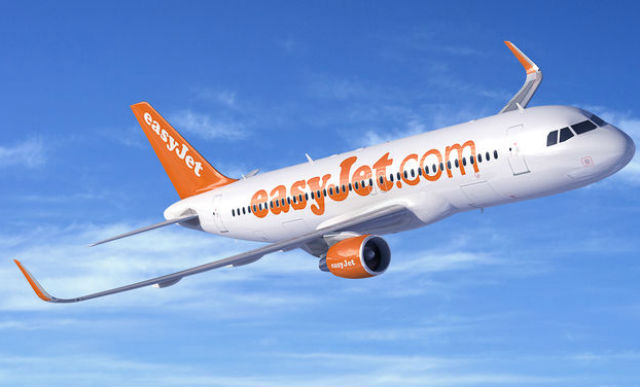In an effort to retain market advantage as a low-cost airline, EasyJet is exploring innovative technologies that could help reduce the time aircraft are on the ground and decrease disruption to its operations.
On 4 June, during its annual innovation day at Milan-Malpensa airport – the second-largest base for the airline outside of London Gatwick – the carrier demonstrated a number of technologies it has been working on that could both reduce the logistics burden on the airline and better the customer experience.
“What is in our blood is that we are an innovative and pioneering airline,” says Carolyn McCall, chief executive. “It used to cost a lot of money to travel in Europe… [so] it’s all about keeping fares low for passengers.”
The airline has been touting unmanned air vehicle technology for aircraft inspection for some months now – an innovation that became reality in recent weeks when EasyJet carried out an inspection of an Airbus A320 at its Luton base using a new configuration of UAV – a capability it plans to roll out in 12-18 months.
The Remote Intelligent Survey Equipment for Radiation (Riser) quadrotor UAV – originally designed for gamma radiation inspection – and its sensors were developed by Blue Bear and Createc, and incorporate an avionics system that ensures the UAV stays 1m away from the aircraft it is inspecting.
Riser uses electro-optical, light detection and ranging sensors, which can correctly locate damage caused by lightning strikes – something that is currently carried out manually by staff.

Beth Stevenson/Flightglobal
The UAV features a two-laser infrared system that keeps it a safe distance from the aircraft, while a seven-laser handheld system developed by Ametek that is currently used by EasyJet for inspections could be incorporated into a payload for a UAV in the future.
Riser also incorporates a safety feature that forces the UAV to redirect if something unexpected enters its path, and its area of operation can be geofenced.
EasyJet is also exploring the use of prognostics tools to predict when a fault is due to occur on the A320, and has teamed up with Airbus to study fault prognosis to help the airline predict when an aircraft part is due to fail, so maintenance can be carried out ahead of such an eventuality.
Real-time information will be transmitted from aircraft systems via the aircraft’s communications addressing and reporting system, which will then be analysed. Fault predictions in turn can then be sent to the airline operations team, so that work can be carried out on the aircraft as soon as it lands.
Aidan Kearney, head of maintenance operations for the airline, says that while telemetry is already used for aircraft prognostics, this will ensure an engineer is waiting to carry out maintenance when the aircraft lands, to avoid any unnecessary disruption.
“What we want to do is advance that telemetry,” Kearney notes. “We want to take that data and feed it into the prognostics tool and know in advance when something is going to happen.”
McCall, meanwhile, says that should wi-fi technology for aircraft become more affordable, EasyJet would consider implementation on some of its routes.
The company says antennas are getting smaller and therefore more suitable for airlines, and EasyJet is watching developments in ground infrastructure closely. For example, satellite communications company Inmarsat is looking to roll-out a ground element that in theory would allow aircraft to tap into it for connectivity as they fly over a sequence of ground stations.
The airline also showcased 3D printing of engine parts alongside partner Safran, and is introducing a mobile host functionality to its phone applications that uses GPS, Google and airport data to determine where a customer is within an airport and direct them to where they need to go, be it a gate or baggage reclaim.
Two pre-production units of an ash detection system are also expected to be delivered in January 2016 for testing, EasyJet notes.
The system will need to be certificated to allow integration into aircraft, and the more data collected to help inform the decision, the better, it adds. EasyJet hopes the system will be commercially operational by the end of 2017.

Airbus
Meanwhile, EasyJet plans to continue to operate to its strengths – namely on short-haul European routes and from its current operating bases, according to McCall.
“It think it is unlikely we’ll operate out of Heathrow with the infrastructure that is there today,” she notes. “We won’t be able to do what we do at Heathrow at the same scale.”
If another runway were to be built at Heathrow as proposed, EasyJet “will seriously consider it”, although at the moment there are not enough slots and the airport is set up for legacy users, she says.
McCall stresses that the airline has an advantage in short-haul European routes: “Short-haul Europe will be about people like us”, she says, claiming that EasyJet is 30-40% cheaper than legacy airlines in this market.
Although “long-haul is not for today”, McCall notes that EasyJet has lots of directions in which to grow, and it will continue to assess the state of the market and its business model as opportunities and new ways to access new markets become available.
Source: Flight International



















